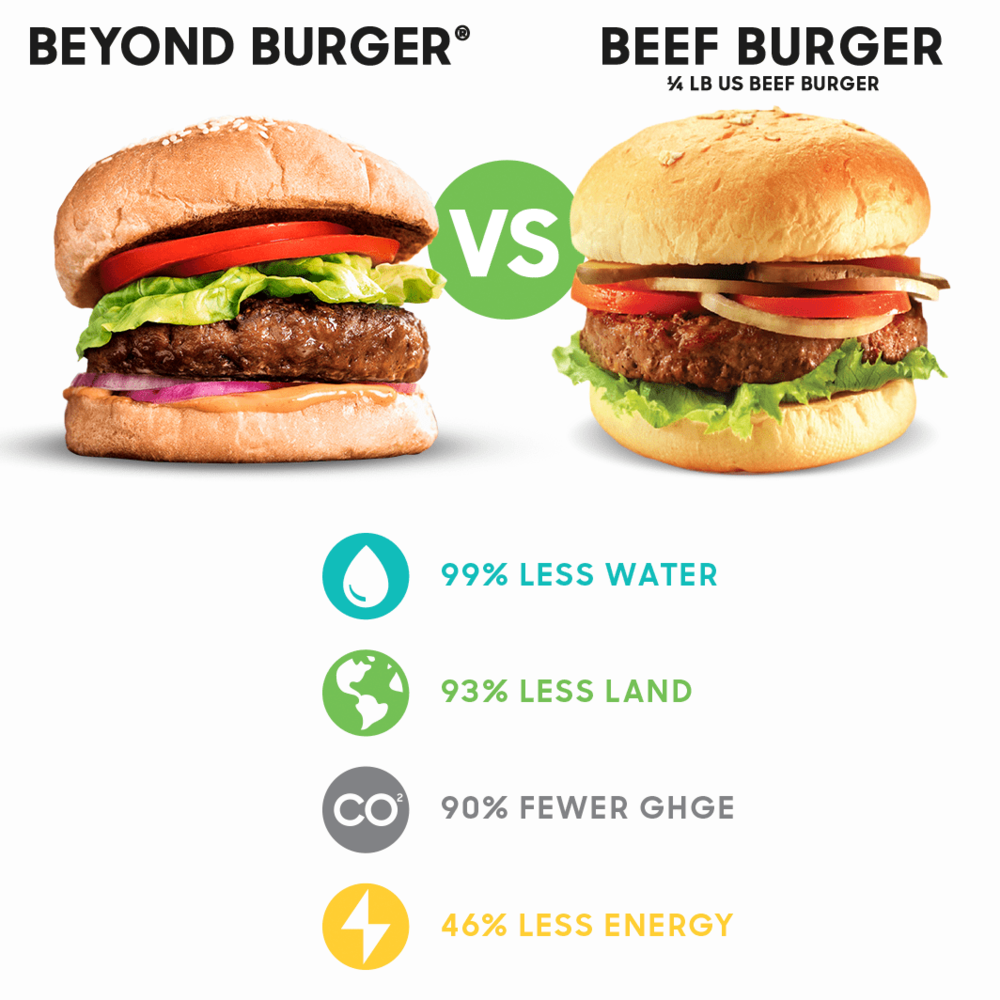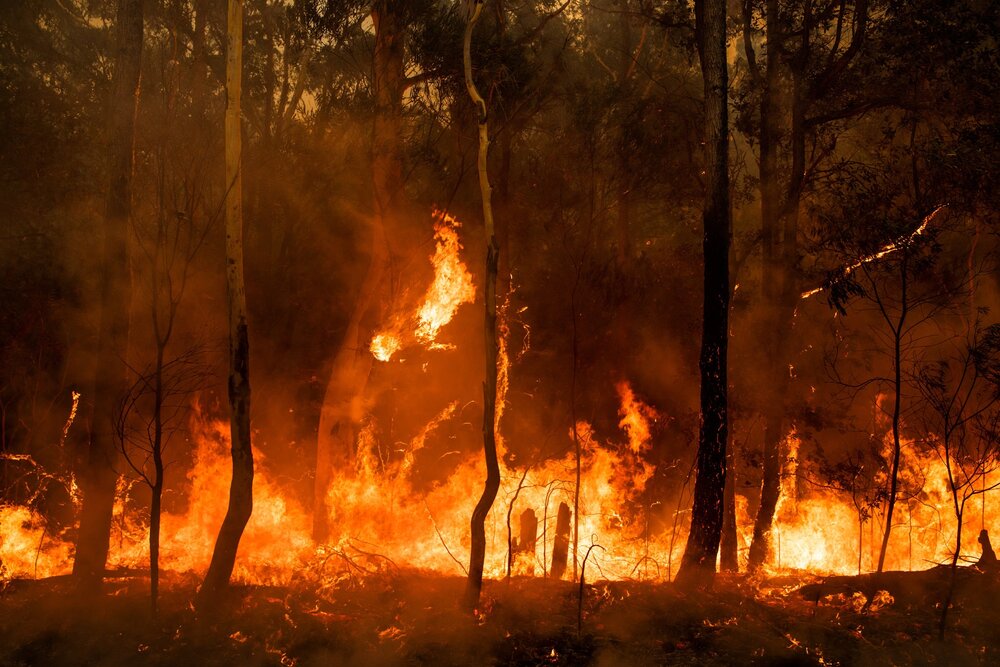The Environmental Impacts of Paper
Posted by Pawan Saunya onThe age old paper vs. plastic debate transcends beyond grocery bags. There are plastic and paper options for cutlery, cups, binders and more- and paper is always framed as the eco-friendly option. However, while paper is more eco-friendly if you’re primarily concerned about plastic pollution, it shouldn’t be viewed as the holy grail of environmentalism.
The impacts of paper start at sourcing. 40% of the world's wood harvest is used for paper manufacturing. While some wood is sourced from sustainably managed forests, most isn’t, driving deforestation, destroying habitats and leading to carbon emissions. This is, arguably, equally as bad as the resource sourcing that is required for plastics, which includes natural gas extraction and refining.
The next step is to turn this wood harvest into paper, which is a very greenhouse gas-intensive process. 9% of carbon dioxide emissions from the manufacturing industries comes from the paper industry, and in the U.S., the paper and pulp industry is ranked as the 4th largest emitter of greenhouse gases among all manufacturing industries. When compared to plastic bags, paper generates 3 times more greenhouse gases. The manufacturing process also requires a large amount of water; 4 times more than plastic bags.
The greenhouse emissions continue through disposal. While paper is recyclable and has a relatively high recycling rate of 65%, a lot of it still ends up in our landfills. Paper makes up around ¼ of landfills, and releases methane as it degrades, contributing to global warming. However, the good aspect of paper is that it is biodegradable and compostable- unless it is colored or contains a glossy coating. Unlike plastic, it can be reincorporated into the environment and doesn’t cause the health issues that are connected to plastic pollution.
Paper underperforms plastic in some aspects, is equally as bad in others, and in terms of disposal, is better. This means that, all in all, we should work to minimize our primary resource consumption of both paper and plastic. Here are 5 ways to do that.

Use Reusables
If you buy and use reusables made out of materials like glass, metal, bamboo or stainless steel, instead of single-use products made out of paper and plastic, you can avoid these environmental impacts altogether. When you go to the grocery store, you shouldn’t have to use paper or plastic- you should bring a reusable bag. However, remember that reusables, like single-use products, still have environmental impacts. They require raw materials, energy and water to be produced, which impacts the environment. When you buy a reusable item, you should view it as an investment, and should use it until it’s on its last legs. Ideally, you should make do with what you already have. Upcycle an old pasta sauce jar into a coffee cup and recycle old clothes into a reusable grocery tote.
Buy Recycled Materials
Recycled paper requires 60% less energy to produce materials made out of recycled paper than it does non-recycled paper. So, when you absolutely have to buy a paper product, opt for ones made out of some percentage of recycled content, like these notebooks.
Embrace Minimalism
If you reduce how much you buy, you’ll reduce how many resources you consume, reducing your carbon footprint and the carbon footprint of manufacturing industries. Considering consumerism is responsible for 60-80% of environmental impacts according to this study, minimalism is one of the best things you can do for the environment (and your wallet).

Recycle and Compost
Recycling paper mitigates the energy needed to produce products out of new paper, and composting paper products can mitigate the methane emissions that come from paper degrading in the landfill. It can also improve soil quality and can reduce the need for chemical fertilizers if applied to farmland. Just remember- colored and glossy paper can’t be composted.
Opt for Hemp or Bamboo
Hemp is positioning itself as an eco-friendly alternative for paper products. Hemp grows faster than trees, produces twice as much fiber per acre, and sequesters a lot of carbon as it grows. Bamboo is similar- it’s fast-growing and can be used as a substitute for paper in things like toilet paper, single-use plates or notebook paper.

Kayla Guilliams
is the blog manager for Zero Waste Club, combining her love for writing with her passion for all things environmental sustainability. She is currently a student at the University of North Carolina at Chapel Hill where she is studying journalism, environmental studies, and food studies in hopes of building a career in environmental activism. You can find her on Instagram as @kaylaguilliams.
How to Have a Sustainable Valentine's Day
Posted by Pawan Saunya onValentine’s Day, like most holidays, is pretty unsustainable. The chocolate, the stuffed toys, the plastic covered flowers- it all comes at an environmental cost. Here’s how you can make your Valentine's Day more sustainable, whether you’re spending it alone or with someone special.

Give fair trade chocolate
58 million pounds of chocolate will be consumed during the week of Valentine's Day in America alone, most of which will have been grown in socially and environmentally unsustainable conditions. 70% of cocoa beans are grown in West Africa, where thousands of children are forced to harvest cocoa and 70% of illegal deforestation is linked to the drive for cocoa production. If you buy fair trade chocolate, you can support operations that are working against these unsustainable conditions. Fair trade chocolate companies ban child and forced labor, and pay farmers a fair price. A lot of fair trade companies, like Equal Exchange, also work with farmers to develop sustainable harvesting practices to promote environmental stewardship.
Buy flowers locally
Despite being a product of nature, cut flowers have quite the impact on the environment from the beginning to the end of their life. First, the flowers are grown, where a lot of agrochemicals are used. The flowers are then transported overseas to be sold. Three weeks of flower delivery flights results in 360,000 metric tons of CO2 emissions. After they’re flown they are put on a truck where they have to be refrigerated, which requires a lot of energy use and results in more CO2 emissions. Bouquets are then wrapped in thin plastic that can’t be recycled. To avoid these negative environmental impacts, do your research on your local florists to see their business practices, or visit your local farmers’ markets for local, in-season flowers.
Give experiences instead of things
Consumerism plays a huge role in climate change and other environmental issues, with one study citing consumerism as the source of 60-80% of environmental impacts. Since less is more when it comes to sustainability, consider gifting experiences rather than things. Give a spa day certificate instead of a giant teddy bear, or theatre tickets instead of jewelry.

Opt for plantable cards
While most traditional greeting cards are recyclable, they still have quite the environmental impact (especially if they’re integrated with music and glitter and not recycled). Creating a paper card requires deforestation to harvest lumber, large quantities of water and energy to manufacture the cards, and soil and water pollution from the factories that manufacture the cards. Not to mention the large sum of paper waste that’s created if these cards go unrecycled. If you still want the sentiment of giving a real card but want to avoid these environmental impacts, opt for a plantable card. These cards are made from recycled paper scraps and are mixed with wildflower seeds so you can plant them instead of throwing them away- making them sustainable from cradle to grave.
Vegan is best
When you’re planning your Valentine's Day dinner, make it vegan. Cutting meat and dairy from your diet is one of the number things you can do to reduce your carbon emissions and resource consumption. For example, one Beyond Burger uses 99% less water, 93% less land, 46% less energy and results in 90% fewer greenhouse gas emissions than a regular burger. Just replacing one

Kayla Guilliams
is the blog manager for Zero Waste Club, combining her love for writing with her passion for all things environmental sustainability. She is currently a student at the University of North Carolina at Chapel Hill where she is studying journalism, environmental studies, and food studies in hopes of building a career in environmental activism. You can find her on Instagram as @kaylaguilliams.
Why Your Small Changes for the Environment Matter
Posted by Pawan Saunya onSometimes I get scoffed at for altering my lifestyle to be more climate friendly. Why should I change my lifestyle to only make a minuscule impact on a global issue that can really only be solved by a total restructuring of our businesses and governments?
Yes, my impact, in the grand scheme of things, is tiny. Yes, I’m not solving the issue on my own. Yes, I know that governments and businesses have a much bigger role to play in this issue than I do. But does that mean I should throw in the towel and stop trying? I don’t think so.

It’s an ethical responsibility.
Climate change is leading to the destruction of ecosystems and the deaths of people worldwide, and it all started because of our current way of living. Our profit-hungry businesses, environmentally reckless governments and meat-rich diets have lead the planet into an ecological disaster. If I exist within this system and am privileged enough to make changes and make my voice heard, but I choose not to, am I not remaining complacent in the disaster? Just because my impact, whether good or bad, is small, it doesn’t make it ethically right to remain complacent. If I am privileged enough to make a positive impact, no matter how tiny, I should view that as an ethical responsibility. Nothing gives me the right to eat burgers and buy fast fashion, two unethical and environmentally irresponsible practices, just because my impact in avoiding those practices is small, if I have the means to avoid said practices.
Think about other practices that are widely accepted to be unethical- lying, cheating, stealing. If you engage in these behaviors it still makes them unethical, even if it was done on a small scale.
Changes gain power over time.
Avoiding a $5 fast fashion t-shirt today could lead to avoiding hundreds in my lifetime. Choosing to go vegan just once a week adds up to 52 days in a year, leading to the aversion of nearly 1,000 pounds of CO2. Keep the habit up for several years, and you’re making a big impact. While our impact of our lifestyles on a day to day basis is small, when these changes are sustained over months and years, their impact can become huge. You shouldn’t get discouraged about the minuscule impacts your sustainable lifestyle has on the daily- you should be inspired by how your impact will compound over time.
Power comes in groups, and those groups start with individuals.
If I boycott a business or a product because of its impact on the environment, I am not doing much in the way of altering that business’s demand. They will still have thousands of other customers supporting them, so losing my business isn’t that detrimental. However, if I boycott a business, tell my friends and family why, and they get inspired to do the same, I am creating a ripple effect. My friends and family will start boycotting the business and telling their friends and family to do the same, and before you know it, the business has lost thousands of customers- an impact on their demand they will notice.
This same principle applies to going vegan, using a metal straw, bringing a reusable coffee cup, or protesting. These movements of adopting environmentally-friendly behaviors all start with one person adopting the mindset of making change, and they then inspire others to do the same.
In fact, mindset is everything. When we make these small changes in our daily life, we’re sending a greater message to governments and businesses that we are ready and willing to change for the sake of the environment. On a collective scale, our voices and dollars have power. Businesses want to make money, and will slowly but surely start becoming more environmentally and ethically sustainable if they start to lose demand and business on a large, collective scale- a collective scale that starts with the actions of one individual like yourself.
It’s analogous to voting. A lot of people choose not to vote because they don’t think their vote matters. But, it’s the collection of individual votes that makes them powerful and that can bring environmentally-minded people into government, and this collection cannot happen without the initial action taken by individuals.
Think of activists like Greta Thunberg. Her impact around the world in terms of climate action and protesting has been huge, and it all started with her small, individual action of sitting outside Swedish parliament. Even though her initial impact was minuscule, through inspiring people and being committed to change, her impact on the movement has grown over time to become a massive force.
You cannot get through a single day without having an impact on the world around you. What you do makes a difference, and you have to decide what kind of difference you want to make.

Kayla Guilliams
is the blog manager for Zero Waste Club, combining her love for writing with her passion for all things environmental sustainability. She is currently a student at the University of North Carolina at Chapel Hill where she is studying journalism, environmental studies, and food studies in hopes of building a career in environmental activism. You can find her on Instagram as @kaylaguilliams.
How and Why to Reduce Your Water Footprint
Posted by Pawan Saunya onAs our population grows so does our demand for water, leading to tension surrounding our water resources. More than 1 billion people worldwide lack access to water, and 2.7 billion people lack access for at least one month out of the year.
Water shortages aren’t just caused by an increasing population. Inefficient water use for crops, increasingly severe droughts due to climate change and pollution due to fertilizers and pesticides all contribute to water scarcity.
While in more developed areas like the US and the UK where water is seemingly abundant these issues of water scarcity don’t seem prevalent, everyone around the world has a responsibility to treat water as a scarce resource. Here are 5 ways you can reduce your water consumption in your home and through your lifestyle.
1.) Calculate your water footprint
Calculating your water footprint is the first step to take in your efforts to conserve water. Understanding what aspects of your life require the most water can help you make the most effective changes to reduce your water use. Calculate your footprint here: https://www.watercalculator.org/
2.) Change your diet
While all food products require water, some require more than others. Meat and dairy are the top consumers- especially beef. One Beyond Burger requires 99% less water than a traditional beef burger. A good rule of thumb is to eat lower on the food chain- opt for plant-based foods like vegetables, legumes and fruits, and avoid meat dairy and eggs. However, this rule of thumb doesn’t always apply, with nuts, coffee and wine all requiring a large amount of water.

3.) Install water-efficient appliances and fixtures
According to the EPA, if every household in the U.S. installed a low-flow showerhead, 250 billion gallons of water would be saved annually. According to EnergyStar, WaterSense faucets use 20% less water than conventional ones, and high-efficiency clothes washers use 30-50% less water. These appliances and fixtures will shed cents off your water bill and liters off your water footprint.
4.) Use less energy
Power plants are high consumers of water, so reducing your energy use can reduce your water footprint. Installing efficient appliances, turning off your lights when you leave the room, unplugging appliances when they aren’t in use and making sure there are no air leaks in your windows and doors are all great ways to save energy in your home.
5.) Buy used clothes and electronics
One new t-shirt requires 2700 liters of water to produce and one new pair of jeans requires over 8,000 liters. Buying used clothes in charity shops or from online platforms or simply opting to swap clothes with friends rather than go shopping can offset this water demand and decrease your water footprint. Buying used electronics can do the same, as one iPhone takes around 240 gallons of water to produce.


Kayla Guilliams
is the blog manager for Zero Waste Club, combining her love for writing with her passion for all things environmental sustainability. She is currently a student at the University of North Carolina at Chapel Hill where she is studying journalism, environmental studies, and food studies in hopes of building a career in environmental activism. You can find her on Instagram as @kaylaguilliams.
How You Can Help Australia
Posted by Pawan Saunya onAustralia has been ravished from devastating fires that have been roaring through the country since October. 15.6 million acres have been burned, destroying homes and businesses and killing 25 people and an estimated 1 billion animals. Here’s where you can donate to help Australia.
But first, let’s talk about climate change.

via Matthew Abbott for The New York Times
Experts say that Australia’s dry season was particularly lengthy and detrimental this year due to impacts from climate change. Climate change is going to increase both the frequency and intensity of natural disasters like wildfires by increasing temperatures and lengthening the dry season.
It is vital that we take climate action now to mitigate the future impacts that climate change could have on our world. Cut your meat consumption, buy secondhand and push for climate policy at the local and national levels. If action isn’t taken now, these fires will become the new normal.
Where to donate:
-
The New South Wales Rural Fire Service is a volunteer-based agency that is on the front lines of fighting the fires. All donations go towards supporting the volunteer brigades.
-
The Australia Country Fire Authority
The CFA is promoting four different avenues of giving to support their firefighting efforts. You can either donate to help communities in need through the Victorian Bushfire Appeal, support volunteer firefighters through the Volunteer Welfare Fund, or directly to the CFA or their Brigades.
-
Donations to the Koala Hospital are being used directly to support the rehabilitation of koalas harmed in the fires. The website is facing unprecedented demand due to donations, so they ask to try again in a few days if transaction time is particularly slow. You can also donate to their GoFundMe here.
-
The Australian Red Cross is using donations to deploy trained volunteers to impacted communities and is issuing emergency grants to those who will need financial assistance to recover from the fires.
-
The WWF is planning to help reforest the area faced with disaster when the fires subside and are committed to long-term conservation efforts in the region.
-
GIVIT is a non-profit using 100% of the money they receive to provide victims of the fire with the items they need most, such as backpacks and clothing.
-
WIRES is a wildlife rescue group in Australia that is working tirelessly to rescue injured and orphaned animals that were impacted by the fires. All donations to their emergency fund go straight to their rescue efforts.

Kayla Guilliams
is the blog manager for Zero Waste Club, combining her love for writing with her passion for all things environmental sustainability. She is currently a student at the University of North Carolina at Chapel Hill where she is studying journalism, environmental studies, and food studies in hopes of building a career in environmental activism. You can find her on Instagram as @kaylaguilliams.
